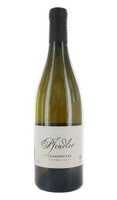Pfendler Vineyards, Sonoma Coast (California) Chardonnay 2012 ($38): California’s Sonoma Coast is a special place for growing Pinot Noir because it encompasses varying pockets of cool climates, suited for delineated wines with concentrated fresh fruit flavors. Most Pinot Noir producers also make a Chardonnay, but those wines tend to enjoy less buzz — probably just because Chardonnay is less fashionable these days than  Pinot Noir is. But I continue to love good Chardonnay wines, and the 2012 Pfendler Sonoma Coast Chardonnay is worthy of attention.
Pinot Noir is. But I continue to love good Chardonnay wines, and the 2012 Pfendler Sonoma Coast Chardonnay is worthy of attention.
The Sonoma Coast AVA is a large territory, covering the county’s entire coastline and a broad swath of land across the southern part of the county. Pfendler’s vineyards are situated in an interior part of the zone, but one that nonetheless benefits from coastal influences through cool winds and morning fog that funnel inward across a coastal mountain opening known as the Petaluma Gap.
Although Pfendler Vineyards was founded only in 2007, its history dates back to 1992 when Peter Pfendler — a former fighter pilot, Harvard Law graduate, and founder of Polaris Aircraft Leasing Corporation — first planted vines on the property. He subsequently planted the first vines in the Gap’s Crown vineyard, a well-regarded site that today is owned by Bill Price. Following Peter Pfendler’s death in 2007, his widow, Kimberley, established the small family winery in his honor. The winery produces only Pinot Noir and Chardonnay; in the 2012 vintage, only 300 cases of Chardonnay were produced, and 350 of Pinot Noir.
What impresses me about this 2012 Pfendler Chardonnay is its terrific balance between commanding structure and pure, focused aromatics. The wine’s aromas and flavors — honey, red apple, pear, citrus, toffee, nuts and floral notes — are certainly complex, and in your mouth are beautifully persistent, but they are less overpowering and less oak-driven than in many California Chardonnays. The rest of the wine holds its own with the aromatics. The body is full, and the texture is wonderfully soft and rich. Crisp acidity takes over the mid-palate, surrounded by contrasting creaminess. After you swallow, the complex flavors return and linger long.
Winemaker Greg Bjornstead produced this wine with fairly classic minimum-intervention techniques. The juice of the partially destemmed, crushed grapes fermented in barrels through the action of native yeasts, and the wine spent eight months developing on its lees. The barrels were French oak, and 40 percent of them were new.
As can happen with ambient yeast fermentations, the juice’s transition into wine was very slow and in fact it ended only in June. Among other effects, this factor can account for the creaminess of texture, which causes the wine to feel almost fat in your mouth despite the crispness of its acidity.
This wine is still quite young, and I found that it tasted even better four days after the bottle had been opened, half-emptied, and refrigerated. It has enough weight to pair well with substantial dishes such as ham, grilled salmon, roast chicken or roasted pork tenderloin, and enough flavor intensity to handle a bit of spiciness in a dish.
91 Points
